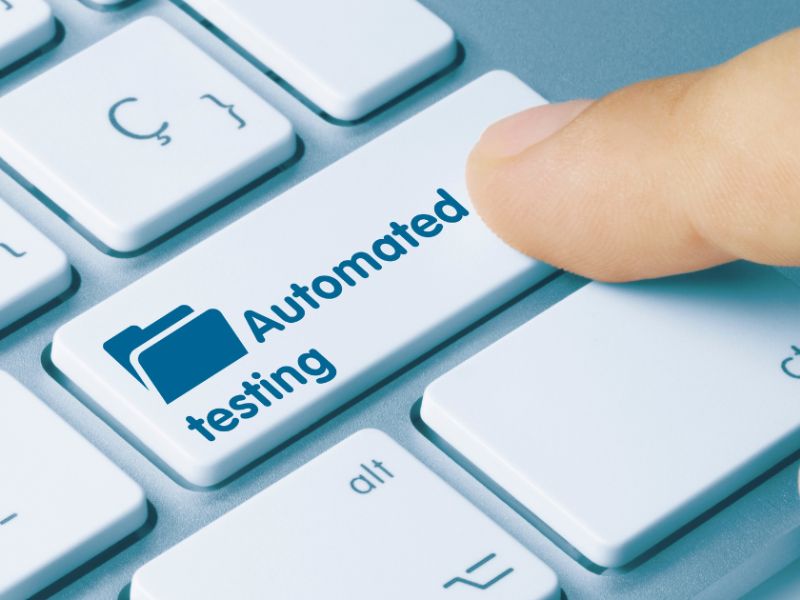Definitions of Manual and Automation Testing
Manual testing is the process of testing a software application or system manually, without using any automated tools or scripts. It involves a tester executing test cases and providing input to the software to verify that it is functioning correctly. The tester will typically use a combination of human observation, intuition, and experience to identify and report bugs or defects in the software.
Automation testing, on the other hand, involves using automated tools and scripts to perform tests on a software application or system. The tests are typically written by a tester or developer and then executed by an automation tool or framework. Automation testing is generally faster and more efficient than manual testing, as the scripts can be run repeatedly and quickly, and can even be run on multiple environments or configurations simultaneously.
The Benefits of Automation Testing for Regression Testing

Regression testing is a type of testing that is performed to ensure that changes made to the software do not impact existing functionality. Automation testing can be especially beneficial for regression testing because it enables testers to validate the software’s behavior quickly and efficiently after changes have been made.
Automated regression tests can be run much faster and more efficiently than manual tests, reducing the time and resources required for regression testing. They are less prone to human error and can more accurately identify issues with the software's functionality. Automated regression tests can be designed to run the same way every time, ensuring that the software is tested consistently and thoroughly after changes have been made. They can be designed to cover a wider range of test cases and scenarios, increasing the overall coverage of the software product.
Automated regression tests can be run frequently and early in the development process, providing faster feedback on the impact of changes made to the software. They can be easily maintained and updated as changes are made to the software, ensuring that the tests remain relevant and effective. Automated regression tests can provide increased confidence in the software's functionality, making it easier to identify and fix any issues before they reach the end users.
So, automation testing can be an effective and efficient way to perform regression testing, helping to improve the accuracy and consistency of regression testing, increase coverage, and provide faster feedback on the impact of changes made to the software.
The Limitations of Automation Testing
Automation testing is a powerful tool for improving the quality of software and streamlining the testing process, but it is not without its limitations.
Automated testing requires a significant investment of time and resources to set up and maintain the automation infrastructure. This can be a significant barrier for some organizations, especially for smaller teams or projects with limited budgets. Automated tests are designed to run in a specific way, based on pre-defined test cases and scenarios. This can limit the creativity and flexibility of testers, who may be unable to come up with new and innovative test cases.
Automated tests need to be updated and maintained as changes are made to the software. This can be time-consuming and costly, and if not properly managed, can lead to a backlog of outdated or irrelevant tests. They can sometimes produce false positive results, indicating that there is a problem with the software when in fact there is not. This can occur due to issues with the automation infrastructure or the design of the tests themselves.
Automated tests are typically focused on functional testing and may not be able to uncover issues with the user experience or usability of the software. Manual testing may still be necessary to identify these types of issues. Automated tests may not always work seamlessly with other tools and systems and may require significant effort to integrate and maintain compatibility.
In conclusion, while automation testing has many benefits, it also has its limitations and should be used in conjunction with manual testing to achieve the best results. Organizations should carefully consider the costs, time, and resources required for automation testing, and weigh these against the potential benefits, before making a decision about whether to use automation testing for their software development projects.
The Importance of Manual Testing

Manual testing is an important part of the software development process that involves manually evaluating the software to identify and fix bugs, defects, and other issues. Despite the increasing popularity of automation testing, manual testing remains a crucial component of software testing for several reasons:
Manual testing allows testers to evaluate the software from a user's perspective and can uncover issues with the software's usability, user experience, and other aspects that may be difficult to identify through automated testing. Manual testing provides testers with the flexibility and creativity to come up with new and innovative test cases, and to explore the software in ways that may not be possible through automated testing.
Complex systems with many dependencies and interactions may be difficult to test through automation and manual testing can be used to validate these systems and ensure that they are functioning correctly. Automated tests are designed to cover a specific set of test cases and scenarios and may not be able to cover all possible edge cases, while manual testing can be used to test these edge cases and ensure that the software is functioning correctly in all situations. Manual testing can be used to validate the results of automated tests and to improve the accuracy of automated tests over time. Manual testing can help to reduce the risk of false positive results from automated tests and provide a more accurate picture of the software's behavior.
Manual testing is an important component of the software development process that should not be overlooked or underestimated. It provides flexibility, creativity, and accuracy that cannot be achieved through automation testing alone and can help to ensure that the software is functioning correctly in all situations.
Automation Vs Manual Testing
There is an ongoing debate in the software development community about whether automation testing can or should completely replace manual testing. Some argue that automation testing is the future of software testing and that manual testing is becoming obsolete. Others believe that manual testing will always be necessary and that automation testing can only supplement manual testing.
On one hand, automation testing offers several benefits, such as increased efficiency, improved accuracy, and the ability to run repetitive and time-consuming tests quickly. Automated tests can also be run frequently, making it easier to catch bugs and issues early in the development process.
On the other hand, manual testing has its own advantages. For example, manual testing can uncover user experience issues that may be difficult to identify through automated testing. It also allows for more flexibility and creativity in testing, as testers can come up with new test cases and scenarios that may not be covered by automated tests.
The best approach is likely a combination of both manual and automation testing to achieve the best results. Automated tests can be used to supplement manual testing and can help to reduce the time and resources required for manual testing. At the same time, manual testing can be used to complement automated testing and can help to uncover user experience issues that may be missed by automated tests.
Ultimately, the right approach will depend on the specific needs and goals of the software development project and the team involved. The most important thing is to use a balanced and effective testing strategy that incorporates both manual and automation testing, rather than relying solely on one or the other.
Some Best Practices for Integrating Automation Testing into Your Testing Strategy

Start with the right tests: Start by automating regression tests, which are repeatable and provide a high return on investment. Automate tests that are time-consuming, repetitive, and prone to human error.
Plan your test automation strategy: Define the scope and objectives of your automation testing and create a detailed plan that outlines the tests to be automated, the resources required, and the timeline.
Use the right tools: Choose tools and technologies that support your testing objectives and meet your testing requirements. Consider factors such as ease of use, scalability, compatibility, and cost when selecting automation tools.
Train your team: Provide training for your team members on the tools and technologies used for automation testing and ensure that everyone is familiar with the testing processes and best practices.
Integrate automation into the development process: Automated tests should be integrated into the development process and run continuously, such as during the build process or on a continuous integration server.
Maintain your tests: Regularly maintain and update your automated tests to ensure that they continue to provide value over time. This includes fixing broken tests, updating tests when changes are made to the software, and removing redundant tests.
Collaborate with your team: Encourage collaboration between the development, testing, and automation teams to ensure that everyone is aware of the testing objectives and processes.
Monitor results: Monitor the results of your automation tests to identify any issues and areas for improvement. Analyze test results to determine the success of your automation testing strategy and make changes as needed.
Integrating automation testing into your testing strategy requires careful planning, the use of the right tools and technologies, and collaboration between different teams within your organization. By following these best practices, organizations can improve the efficiency and effectiveness of their testing processes and ensure the quality and reliability of their software systems.
Final Thoughts on Automated vs. Manual Software Testing
The future of automation testing is likely to bring a greater emphasis on automation and a reduction in the need for manual testing. As automation tools and technologies continue to evolve, organizations will be able to automate an increasing number of tests, reducing the time and effort required for manual testing.
However, manual testing will still play a role in the future of software testing. There will always be some aspects of software testing that cannot be fully automated, such as exploratory testing and usability testing. In addition, manual testing can provide valuable insights into the user experience that cannot be captured by automation.




